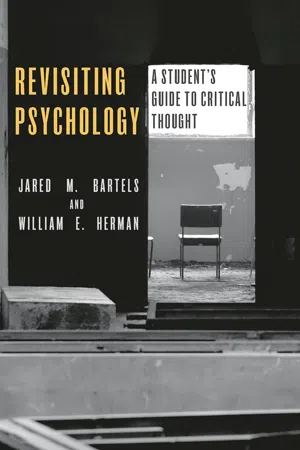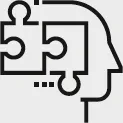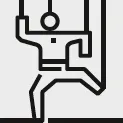
eBook - ePub
Revisiting Psychology
A student's guide to critical thought
This is a test
- 293 pages
- English
- ePUB (mobile friendly)
- Available on iOS & Android
eBook - ePub
Book details
Book preview
Table of contents
Citations
About This Book
This textbook presents overviews of 12 landmark studies in psychology from diverse areas of research such as consciousness, developmental psychology, learning, memory, social psychology and psychopathology. Through a range of critical thinking exercises and reflective questions, students can evaluate the methodology and impact of these classic studies and quickly hone their analytical and critical thinking skills. Accessible, clearly-structured and written with undergraduate students in mind, this book will make essential reading for any psychology course.
Frequently asked questions
At the moment all of our mobile-responsive ePub books are available to download via the app. Most of our PDFs are also available to download and we're working on making the final remaining ones downloadable now. Learn more here.
Both plans give you full access to the library and all of Perlego’s features. The only differences are the price and subscription period: With the annual plan you’ll save around 30% compared to 12 months on the monthly plan.
We are an online textbook subscription service, where you can get access to an entire online library for less than the price of a single book per month. With over 1 million books across 1000+ topics, we’ve got you covered! Learn more here.
Look out for the read-aloud symbol on your next book to see if you can listen to it. The read-aloud tool reads text aloud for you, highlighting the text as it is being read. You can pause it, speed it up and slow it down. Learn more here.
Yes, you can access Revisiting Psychology by Jared M. Bartels, William E Herman in PDF and/or ePUB format, as well as other popular books in Psychology & Research & Methodology in Psychology. We have over one million books available in our catalogue for you to explore.
Information

CHAPTER 1
Introduction to Critical Thinking
What is critical thinking? Why is it important? How do we learn it?
The ability to carefully dissect and critically evaluate thoughts, ideas, theories, and claims has never been more crucial to improving our individual and collective lot in life. Attacks upon science and scientists, political debate in public policy domains such as global warming, and ubiquitous “fake news” media reports besiege our current existence. How to make sense out of the scientific field of psychology, the scientific method itself, and everyday life has become a priority in the midst of confusion brought on by clashes between politicians, scientists, soothsayers, media representatives, and many other stakeholders. Distortion, delusion, and manipulation are direct threats to our democracy, our ability to make thoughtful personal and collective decisions, and our healthy way of life.
Critical thinking incorporates a modern-day paradigm to uncover useful versions of truth. This tradition has a long and storied history. Well over a century ago, John Dewey argued against recitation learning and described the antithesis of rote memorization as reflective thought: “Active, persistent, and careful consideration of any belief or supposed form of knowledge” (Dewey, 1910/1998, p. 6). America’s foremost educational philosopher further outlined in his famous book How We Think (Dewey, 1910/1998) that reflection as “mental vision” included inductive and deductive reasoning, postponing judgment rather than making snap judgments, a healthy imagination, active learning, applying knowledge, and well-informed judgments.
While many operational definitions of critical thinking exist today, we employed the vision of John Dewey in our search for a more modern and unifying theoretical paradigm. A potential truth for a thoughtful person demands the careful and critical scrutiny of ideas. New and existing ideas require public debate, scientific testing, and constant revision. This process cannot allow for the interference of subtle and more obvious forces wishing to maintain the status quo and traditions of unexamined time-honored truths.
Howard Gardner (2006) just over a decade ago in his influential book Five Minds for the Future suggested that disciplinary thinking, synthesizing knowledge, creativity, respecting human differences, and ethical concerns in decision making are at the core of responsible decision-making for future professionals, teachers, parents, political and business leaders, trainers, and those who value cutting-edge cognitive skills. With increasingly accessible knowledge accumulating at a rapid pace, being able to think like a professional within a discipline and synthesize information across disciplines is at a premium. Those best positioned to meet the demands of the future will develop a scientific mindset allowing them to distinguish the relevant from the irrelevant, high from poor quality evidence and science from pseudoscience.
In our estimation, the following characteristics apply to critical thinking:
Critical thinkers… |
Critical thinkers do not… |
have the audacity to challenge existing truths |
trust the unexamined judgments of others |
fact-check the logic and personal judgments regarding the appropriateness and existence of evidence |
remain rigid in their positions in the face of evidence that they deem powerful |
are able to make decisions for themselves |
cave in and conform to the beliefs of others |
| are able to withstand challenges from others who have opposing views, but willing to change one’s thinking, if evidence supports such a stance | take a defensive stance in which “saving face” is more important than “seeking truth” |
The learning conditions that would support such behaviors remind us very much of what counselors and therapists attempt to create in a therapeutic relationship with their clients: rational thinking, evidence-based decision-making, independence, healthy self-esteem, self-assessment, and awareness of one’s strengths as well as one’s imperfections.
A few authors have explored issues related to why critical thinking is so hard to teach. Willingham (2007) does an exemplary job in tackling this learning dilemma by highlighting the following pitfalls: (1) thinking often fails to transfer from one domain (subject area) to another, (2) learning often focuses upon surface structure rather than deep knowledge, and (3) critical thinking in a domain often requires considerable knowledge within that domain. The advancement of critical thinking skills therefore is not a “skill” to be learned, metacognitive strategies increase the chances of critical thinking, and such metacognitive strategies need to be situated within domain knowledge with considerable praxis.
Willingham (2007) specifically addresses scientific thinking when he stated: “Recognizing when to engage in scientific reasoning is so important because the evidence shows that being able to reason is not enough; children and adults use and fail to use the proper reasoning processes on problems that seem similar” (p. 14). This suggests that we need to teach not only metacognitive skills, and offer considerable practice of such skills and deep knowledge structures within a specific domain of learning, but also “when,” “where,” and “why” we need to employ certain strategies to solve scientific problems.
Since teachers introduce the scientific method so early in formal schooling, some assume that college students already enter higher education with a substantial amount of knowledge of science, think like scientists, and value science. Unfortunately, we have not found this to be the case. Psychology, like other sciences, relies upon the scientific method, an experimental research paradigm designed to explore problems and the use of statistics in order to support or not support hypotheses. Any student of psychology must begin with his/her views regarding how scientists think and operate.
How do you view science?
Think about your agreement or disagreement with the following statements. Why do you agree or disagree with such statements?
1.Scientists do not criticize other scientists’ work.
2.People do not need to understand science because it does not affect their lives.
3.Only thinking is important to scientists, not how they feel about something.
4.Science helps solve the problems of everyday life.
The National Science Foundation (NSF) helped fund the development of these four sample items taken from the more extensive My Attitudes Toward Science (MATS) 40-item K-12 survey instrument (Hillman et al., 2016). Such items offer a golden opportunity to explore your personal thinking related to science. In the real world of science, scientists do critique the work of other scientists before and after the publication of research findings on the grounds of methodology, sampling, theoretical operational definition, statistical approach employed, generalization of the results, and so on. A “true” scientist should try to avoid criticism based upon a dislike for a certain pomp-ous author they have met or the fact that such an author might hold an appointment at a rival school of thought or university. Petty jealousy and competition are part of the scientific world, as well as other life situations, so disagreements and contentious arguments are inevitable. Item #3 certainly highlights the importance of cognitive reasoning that is a hallmark of any scientist, but it is crucial to remember that every scientist is a human being that also possesses emotions, values, and belief systems that may or may not offer a bias in one’s work. Item #4 offers the hope that science could solve everyday problems and make this a better world.
Psychological science has made a substantial positive impact on our lives (Zimbardo, 2004); however, misunderstandings about such research and the field in general can diminish our appreciation for this contribution and applications in practice. Unfortunately, the reality is that science can also make this a more confusing and dangerous world and allow new unforeseen challenging problems to emerge that were never initially detectable.
Scientists learn how to ask questions that result in testable experiments or studies that may or may not eventually support stated hypotheses. Asking a question in a unique or different manner can sometimes advance thinking. One of the authors of this book recently overheard a student ask his clinical psychology professor friend, “Do you believe in Carl G. Jung’s collective unconscious?” This is a common way for introductory students to frame such a question.
However, psychological theory should not be like a religious belief that demonstrates an unthinking and slavish faith to a theory, methodology, or an expected outcome. A better question would be, “Does Jung’s notion of the collective unconscious best fit the clinical data available and help to better understand a client’s behavior?”
As a critical thinker, you must be able to sort out fact from fiction and good science from bad science, while being able to offer a logical explanation that supports your decision. Sometimes we have a purposeful need to “agree to disagree,” if the arena of disagreement rests upon an understood, but unaligned philosophy or other form of fundamental assumption. As you read in later chapters about misunderstandings and points of confusion and controversy within the field of psychology, we draw in liberal arts fashion from the Nobel and Pulitzer prize-winning literary author Ernest Hemingway. We believe that it is time for both readers, writers, and rational thinkers to take Hemingway’s advice of sorting out the wheat from the chaff and truth from untruth (Plimpton, 1958).
The most essential gift for a good writer is a built-in, shock-proof, shit detector.
— Ernest M. Hemingway
As you read the chapters that follow, we urge you to implement the critical thinking tools in each chapter with the aim of detecting what Hemingway might have called “bullshit.” Our hope is that each chapter will challenge what you have already learned and implore you to ask yourself the following question: “And why do I believe that to be true?” The quality of evidence for a particular research finding, theoretical idea, or claim regarding public policy is exactly what we hope you will seriously question. A careful examination of the controversies and points of debate within the field of psychology means that you are well on your way to thinking more like a psychologist. If we have accomplished our goals in this chapter, you will have already critically considered our invitation and should be anxious to read about contentious issues in psychology within the pages that follow.

CHAPTER 2
John Watson and the “Little Albert” Study: How to Create a Phobia?
Primary source: Watson, J. B., & Rayner, R. (1920). Conditioned emotional reactions. Journal of Experimental Psychology, 3, 1–14 (Reprinted in American Psychologist, 55, 313–317, 2000).
Chapter objectives
This chapter will help you become a better critical thinker by:
•Understanding crucial details regarding the classic study conducted by John B. Watson
•Comparing the behaviorist viewpoint to other contemporary perspectives on the etiology of phobias
•Grasping the historical lack of protection during experiments for human subjects
•Considering how the findings from behavioristic theory have been merged with newer cognitive theories
•Evaluating the characteristics of a sample in terms of generalizability
Introduction
Consider the following claim by John B. Watson in 1930:
Give me a dozen healthy infants, well-formed, and my own specified world to bring them up in and I’ll guarantee to take any one at random and train him to become any type of specialist I might select – doctor, lawyer, artist, merchant-chief and, yes, even beggar-man and thief, regardless of his talents, penchants, tendencies, abilities, vocations, and race of his ancestors. (p. 104)
This quotation is a classic representation of behaviorism and its claim that environmental forces shape human development. It is easy even for those outside the field of psychology to see the “truth” to this statement. The home in which you are raised, the schools you attend, the quality of teachers in those schools, the friends in your midst, and the opportunities available to you in life in summation have a powerful influence upon who you might become in this world. However, this emphasis upon external factors diminishes the importance of internal factors such as intelligence (unless we include this in the qualifier “well-formed”), individuality, freedom of choice, and...
Table of contents
- Cover
- Half Title
- Title Page
- Copyright
- Contents
- Preface
- Acknowledgement
- About the authors
- 1 Introduction to Critical Thinking
- 2 John Watson and the “Little Albert” Study: How to Create a Phobia?
- 3 The Nurture Assumption: Does Parental Influence during Childhood Offer the Greatest Impact on Personality Development?
- 4 The Obedience Studies: Ordinary People and Extraordinary Evil?
- 5 On Being Sane in Insane Places: Pseudopatients or Pseudoscience?
- 6 The Stanford Prison Study: Are Ordinary People Capable of Extraordinary Cruelty?
- 7 Media Research: Is Violent Media Making Us More Aggressive?
- 8 Recovered Memories: Do We Dare Trust Them?
- 9 The psi Studies: Psychological Science versus Pseudoscience
- 10 The Ethics of Caring about Human Beings
- 11 Benjamin Libet: Do Human Beings Really Have Free Will?
- 12 The Placebo Effect: How Do Antidepressants Work?
- 13 The Enriched Environment Studies: A Neuroscientific Case for Early Learning?
- Conclusion
- Key terms
- References
- Index